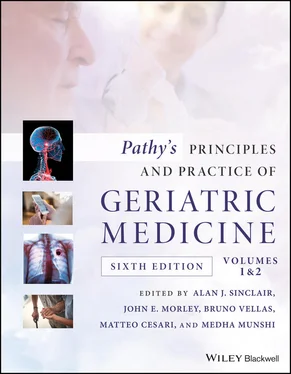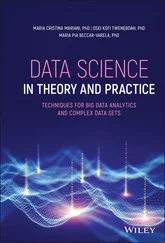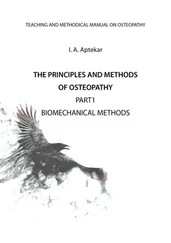Pathy's Principles and Practice of Geriatric Medicine
Здесь есть возможность читать онлайн «Pathy's Principles and Practice of Geriatric Medicine» — ознакомительный отрывок электронной книги совершенно бесплатно, а после прочтения отрывка купить полную версию. В некоторых случаях можно слушать аудио, скачать через торрент в формате fb2 и присутствует краткое содержание. Жанр: unrecognised, на английском языке. Описание произведения, (предисловие) а так же отзывы посетителей доступны на портале библиотеки ЛибКат.
- Название:Pathy's Principles and Practice of Geriatric Medicine
- Автор:
- Жанр:
- Год:неизвестен
- ISBN:нет данных
- Рейтинг книги:3 / 5. Голосов: 1
-
Избранное:Добавить в избранное
- Отзывы:
-
Ваша оценка:
- 60
- 1
- 2
- 3
- 4
- 5
Pathy's Principles and Practice of Geriatric Medicine: краткое содержание, описание и аннотация
Предлагаем к чтению аннотацию, описание, краткое содержание или предисловие (зависит от того, что написал сам автор книги «Pathy's Principles and Practice of Geriatric Medicine»). Если вы не нашли необходимую информацию о книге — напишите в комментариях, мы постараемся отыскать её.
Pathy’s Principles and Practice of Geriatric Medicine
Pathy's Principles and Practice of Geriatric Medicine — читать онлайн ознакомительный отрывок
Ниже представлен текст книги, разбитый по страницам. Система сохранения места последней прочитанной страницы, позволяет с удобством читать онлайн бесплатно книгу «Pathy's Principles and Practice of Geriatric Medicine», без необходимости каждый раз заново искать на чём Вы остановились. Поставьте закладку, и сможете в любой момент перейти на страницу, на которой закончили чтение.
Интервал:
Закладка:
4 Index
5 End User License Agreement
List of Tables
1 Chapter 0 Table 1 The Joseph T. Freeman Award of the Medical Sciences Section of The G... Table 2 The IAGG Task Force recommends the following.
2 Chapter 1 Table 1.1 Components of biological ageing.
3 Chapter 2 Table 2.1 Age‐related changes in dopaminergic synapses. Table 2.2 Changes in hormone levels with age. Table 2.3 Changes in the immune system with age.
4 Chapter 4 Table 4.1 Strategies to combat ageism. Table 4.2 Communication strategies for speaking to patients with hearing lo... Table 4.3 Common scams targeting older adults. Table 4.4 Care plan for emergencies: record the answers and keep them in a ...
5 Chapter 5 Table 5.1 Therapies for women with vaginal dryness and vulvovaginal atrophy...
6 Chapter 6 Table 6.1 Common structural age‐related changes detectable on anatomic brai... Table 6.2 Changes in the neurological examination with ageing. Table 6.3 Age‐related changes in attention and memory functions.
7 Chapter 7 Table 7.1 Changes in exercise capacity due to ageing or disuse, potentially... Table 7.2Changes in cardiorespiratory function due to ageing or disuse, potent... Table 7.3Changes in metabolism and body composition due to ageing or disuse, p... Table 7.4 Changes in the central and peripheral nervous system due to agein... Table 7.5 Exercise recommendations targeting optimal body composition for o... Table 7.6 Potential mechanisms by which exercise can prevent disease. Table 7.7 Exercise and disease treatment. Table 7.8 Major randomised controlled trials including resistance training ... Table 7.9 Exercise recommendations for optimal ageing and prevention and tr...
8 Chapter 8 Table 8.1 Common factors affecting health literacy. Table 8.2 Consequences of low health literacy. Table 8.3 Educational techniques to improve health literacy. Table 8.4 Cultural factors that affect health care. Table 8.5 Barriers to successful, culturally appropriate health care delive... Table 8.6 Common areas of cultural conflict. Table 8.7 ETHNIC(S) mnemonic for improving communication.
9 Chapter 9 Table 9.1 The Health Maintenance Clinical Glidepath.
10 Chapter 10 Table 10.1 Age‐related changes pertinent to geropharmacology. Table 10.2 Practical tool to identify drugs that interact with Cytochrome P... Table 10.3 Tools to aid in the reduction of inappropriate medication use an... Table 10.4 Mnemonics for medication management.
11 Chapter 11 Table 11.1 International adverse events studies, showing data for older pat... Table 11.2 Methods of measuring errors and adverse events. Table 11.3 Methods of understanding errors and adverse events. Table 11.4 Examples of some cognitive biases and heuristics that commonly a... Table 11.5 The seven‐level framework.
12 Chapter 12 Table 12.1 Dietary and nutrient biomarker patterns associated with cognitiv...
13 Chapter 14 Table 14.1 Malnutrition criteria according to the GLIM consensus. Table 14.2 Distinguishing starvation from cachexia. Table 14.3 Comprehensive gerontological assessment (CGA) to address weight ...
14 Chapter 16 Table 16.1 Medical factors related to insufficient nutrient or energy intak... Table 16.2 Medication and nutrient interactions. Table 16.3 Function, deficiency, age‐related changes, food sources, and sup...
15 Chapter 17 Table 17.1 Oesophageal causes of dysphagia. Table 17.2 Causes of delayed gastric emptying. Table 17.3 Medications that affect gastrointestinal motility.
16 Chapter 19 Table 19.1 Medications associated with faecal incontinence. Table 19.2 The assessment of faecal incontinence.
17 Chapter 20 Table 20.1 Anatomical distribution of changes associated with constipation. Table 20.2 Medications commonly associated with constipation. Table 20.3 Medical conditions commonly associated with constipation. Table 20.4 Medications used in the treatment of constipation.
18 Chapter 21 Table 21.1 Pancreatic endocrine tumours.
19 Chapter 23 Table 23.1 Mechanisms and precipitating factors in DIC. Table 23.2 Laboratory diagnosis of DIC.
20 Chapter 24 Table 24.1 Coagulation tests. Table 24.2 Causes of acquired platelet functional defects other than due to... Table 24.3 Causes of acquired coagulation defects. Table 24.4 Haemorrhagic vascular defects. Table 24.5 INR ranges in various conditions. Table 24.6 Thrombophilic conditions.
21 Chapter 25 Table 25.1 Characteristics of bleeding risk assessment tools. Table 25.2 Usual and adjusted dosages for DOACs.
22 Chapter 26 Table 26.1 Cytopenia thresholds according to the WHO 2016 Classification. Table 26.2 Classification scheme of myelodysplastic syndromes (MDS) in the ... Table 26.3 WHO 2016 classification. Table 26.4 Differential diagnosis of clonal or idiopathic cytopenias and my... Table 26.5 International Prognosis Scoring System (IPSS) for MDS. Table 26.6 IPSS Survival for MDS and evolution to AML. Table 26.7 Cytogenetic prognostic groups in the IPSS‐R. Table 26.8 Prognostic models for ESA response in MDS.
23 Chapter 27 Table 27.1 WHO classification of peripheral blood and bone marrow findings ... Table 27.2 Revised International Prognosis Scoring System (IPSS‐R). Table 27.3Cytogenetics MDS score in the Revised International Prognosis Scoring... Table 27.4 WHO (2016) classification of acute myeloid leukaemias.
24 Chapter 28Table 28.1 Association between cardiovascular disease and frailty.Table 28.2 Association between heart failure and risk factors from case/con...
25 Chapter 29Table 29.1 Causes of bradycardia.Table 29.2 Duration of ambulatory monitoring.Table 29.3 Characteristics of trials comparing ventricular and physiologica...Table 29.4 Randomized controlled trials of rate versus rhythm control in AF...Table 29.5 Factors that increase the risk of sotalol‐induced QT prolongatio...Table 29.6 CHA 2DS 2‐VASc risk factor‐based scoring system.Table 29.7 Common medications that interact with warfarin.
26 Chapter 30Table 30.1 Advantage and cautions with IHD medications in older people.Table 30.2 Considerations in older people with IHD.
27 Chapter 31Table 31.1 Cholesterol metabolism and ageing.Table 31.2 Phenotypes and genetic features of primary hyperlipoproteinaemia...Table 31.3 Modification of lipid patterns by lifestyle change and drugs.Table 31.4 RCTs with statins and benefit for ASCVD prevention in subjects a...Table 31.5 Very high risk for future ASCVD events.Table 31.6 Common secondary causes of hyperlipidaemia.Table 31.7 Pharmacologic characteristics of statins.
28 Chapter 32Table 32.1 Organ‐specific symptoms of hypoperfusion.Table 32.2 Causes of hypotension.Table 32.3 Diagnostic criteria for carotid sinus syndrome.
29 Chapter 33Table 33.1 Classifications of hypertension.Table 33.2 Main secondary causes of hypertension in older people.Table 33.3 Common types of hypertension in older people.Table 33.4 Main studies on hypertension management in older people ≥75.
30 Chapter 34Table 34.1 Principle effects of ageing on cardiovascular structure and func...Table 34.2 Effects of ageing on other organ systems.Table 34.3 Classifications and types of heart failure (HF).Table 34.4 Causes of heart failure in older people.Table 34.5 Precipitants of HF in older people.Table 34.6 Common comorbidities in older HF patients and management.Table 34.7 Pharmacological treatments for HFrEF.Table 34.8 Treatment of HFpEF: key trials.
31 Chapter 35Table 35.1 Weighted risk factors relevant to a specific individual patient ...Table 35.2 Frailty markers.Table 35.3 Factors used for shared decision‐making about type of valve pros...Table 35.4 An illustrative list of interactive factors that influence the e...Table 35.5 Target International Normalised Ratio (INR) for mechanical prost...Table 35.6 Stroke risk scoring system with acronym CHA 2DS 2‐VASc.
Читать дальшеИнтервал:
Закладка:
Похожие книги на «Pathy's Principles and Practice of Geriatric Medicine»
Представляем Вашему вниманию похожие книги на «Pathy's Principles and Practice of Geriatric Medicine» списком для выбора. Мы отобрали схожую по названию и смыслу литературу в надежде предоставить читателям больше вариантов отыскать новые, интересные, ещё непрочитанные произведения.
Обсуждение, отзывы о книге «Pathy's Principles and Practice of Geriatric Medicine» и просто собственные мнения читателей. Оставьте ваши комментарии, напишите, что Вы думаете о произведении, его смысле или главных героях. Укажите что конкретно понравилось, а что нет, и почему Вы так считаете.












